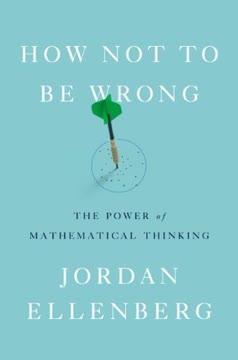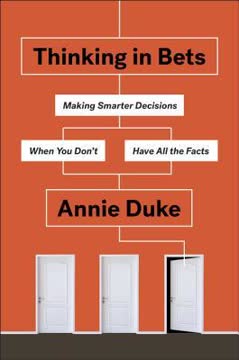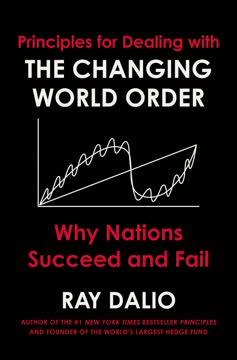Key Takeaways
1. Poker has evolved from intuition to mathematics
"Poker is often considered as both an art and a science. The artistic side comes from the creativity and the intuition you feel in a hand. The scientific part is the methodology and logic you use to come up with those creative plays."
Evolution of poker strategy. The game has transformed from relying primarily on reads and tells to incorporating complex mathematical concepts and game theory. This shift has been driven by the rise of online poker, which allows players to analyze vast amounts of data and play millions of hands per year. As a result, successful players now combine intuition with a strong understanding of probability, equity, and expected value.
Key components of modern poker:
- Statistical analysis
- Equity calculations
- Pot odds and implied odds
- Range-based thinking
- Game theory optimal (GTO) play
2. Understanding equity is crucial for profitable decision-making
"Equity is our share of the pot if a hand is played to showdown."
Equity-based decisions. Equity represents the percentage of the pot you expect to win in the long run, based on your current hand and potential future cards. Understanding equity allows players to make mathematically sound decisions, comparing their equity to the pot odds they're being offered.
Equity considerations:
- Pre-flop vs. post-flop equity
- Equity against ranges, not just specific hands
- Using tools like Equilab for precise calculations
- Accounting for variance in short-term results
3. Pot odds and implied odds guide betting decisions
"Pot odds are the immediate odds we're being offered when we call a bet in poker."
Mathematical foundation for calls. Pot odds represent the ratio of the current pot size to the cost of a contemplated call. By comparing pot odds to your equity in the hand, you can determine whether a call is mathematically profitable. Implied odds extend this concept by considering potential future bets you might win if you hit your draw.
Odds calculations:
- Pot odds = Current pot size : Cost to call
- Implied odds = Pot odds + Potential future winnings
- Convert ratios to percentages for easier comparison
- Factor in stack sizes and opponent tendencies
4. The Rule of 2 and 4 simplifies equity calculations
"The Rule of 2 and 4 is a very easy way to estimate our equity while we're playing a hand without any complicated math or equity calculators."
Quick equity estimation. This rule provides a simple method to approximate your equity when drawing to improve your hand. On the flop, multiply your number of outs by 4 for all-in situations, or by 2 if not all-in. On the turn, always multiply by 2.
Applying the Rule of 2 and 4:
- Flop, not all-in: Outs x 2 = Approximate equity %
- Flop, all-in: Outs x 4 = Approximate equity %
- Turn: Outs x 2 = Approximate equity %
- Remember to account for potential "dirty" outs
5. Set-mining requires careful consideration of stack sizes and opponent tendencies
"To ensure our set-mining decisions are profitable, we should follow the 15-to-1 rule."
Profitable small pair play. Set-mining involves calling pre-flop raises with small pocket pairs, hoping to flop a set (three-of-a-kind). The 15-to-1 rule states that for every 1 big blind invested pre-flop, you should expect to win 15 big blinds when you hit your set to make this play profitable.
Set-mining considerations:
- Effective stack sizes (at least 15x the pre-flop call amount)
- Opponent's likely hand strength and post-flop tendencies
- Position and number of opponents in the hand
- Implied odds and likelihood of getting paid off
6. Proper bet sizing extracts maximum value and protects strong hands
"Our main goal with betting is to provide our opponents a –EV pot odds price, forcing them to call more than they should, based on mathematics."
Strategic bet sizing. When you have a strong hand, your betting should accomplish two goals: extract maximum value from worse hands and protect against draws. By understanding your opponents' likely equity, you can size your bets to offer them incorrect pot odds to continue.
Bet sizing guidelines:
- On wet boards, bet larger to charge draws
- On dry boards, bet smaller to keep weaker hands in
- Consider opponent tendencies and adjust accordingly
- Be aware of stack-to-pot ratios (SPR) and future streets
7. Semi-bluffing with strong draws can be highly profitable
"When we semi-bluff, whether it's an all-in situation or not, we have two primary goals. Our first goal is to maximize fold equity by forcing our opponent into a tough decision, hoping he folds."
Aggressive draw play. Semi-bluffing involves betting or raising with a drawing hand that has a good chance of improving to the best hand. This play combines the immediate possibility of winning the pot through fold equity with the potential to make the best hand if called.
Strong semi-bluff candidates:
- Flush draws (especially nut flush draws)
- Open-ended straight draws
- Combination draws (flush + straight draw)
- Consider board texture and opponent tendencies
8. Bluffs and hero calls don't need to succeed often to be +EV
"The first thing you need to know about bluffs and hero calls is that they don't need to work 100% of the time to be profitable; nor should you expect them to work all the time."
Understanding bluff frequency. Successful bluffing doesn't require a high success rate to be profitable. The math behind bluffing is based on the risk-to-reward ratio of your bet size compared to the pot size. Hero calls, similarly, only need to be correct a small percentage of the time to show a profit.
Bluff and hero call considerations:
- Bluff size relative to pot size
- Opponent tendencies and perceived ranges
- Board texture and story told by the betting
- Your table image and previous action
9. Expected Value (EV) calculations quantify long-term profitability
"EV is how much we expect to win or lose on average, over the long run based upon a specific scenario in poker."
Long-term decision making. Expected Value (EV) calculations allow players to evaluate the profitability of their decisions over a large sample size. By considering both the probability of winning and losing, along with the amounts won or lost, players can make mathematically sound choices that lead to profit in the long run.
EV calculation components:
- Probability of winning and losing
- Amount won when successful
- Amount lost when unsuccessful
- EV = (Win% x Win Amount) - (Lose% x Loss Amount)
- Positive EV indicates a profitable play in the long run
Last updated:
FAQ
What's "Essential Poker Math, Expanded Edition" about?
- Focus on Poker Math: The book is centered around teaching fundamental mathematics essential for No-Limit Hold'em poker, aimed at improving players' understanding and application of poker math.
- Target Audience: It is designed for both beginner and experienced poker players who have struggled with or neglected poker mathematics in their game.
- Comprehensive Coverage: The expanded edition offers more detailed explanations, additional examples, and new topics compared to the original edition.
- Practical Application: The book emphasizes practical math concepts that players can use daily at the poker table to outplay opponents.
Why should I read "Essential Poker Math, Expanded Edition"?
- Improve Your Game: The book provides essential mathematical tools that can significantly enhance your poker strategy and decision-making.
- Accessible Content: It breaks down complex mathematical concepts into easy-to-understand language, making it accessible even for those without a strong math background.
- Proven Success: The original edition was a best-seller, indicating its effectiveness and popularity among poker players.
- Free Resources: Purchasing the book grants access to free poker courses and resources, further aiding in your poker education.
What are the key takeaways of "Essential Poker Math, Expanded Edition"?
- Understanding Equity: Learn how to calculate and use equity to make informed decisions at the poker table.
- Pot and Implied Odds: Master the concepts of pot odds and implied odds to determine the profitability of calls and bets.
- Mathematical Strategies: Implement strategies like set-mining, blind stealing, and 3-bet bluffing using mathematical principles.
- Decision-Making Framework: Develop a structured approach to decision-making in poker, focusing on +EV (expected value) plays.
What are the best quotes from "Essential Poker Math, Expanded Edition" and what do they mean?
- "Poker is a game of long-term EV, not short-term wins and losses." This emphasizes the importance of focusing on long-term profitability rather than individual hand outcomes.
- "A complete poker player is one that can both read their opponents and use math at the poker table." Highlights the dual importance of psychological and mathematical skills in poker.
- "Understanding equity, along with pot and implied odds, lays the foundation behind making correct mathematical plays at the table." Stresses the foundational role of these concepts in successful poker strategy.
- "The best players in the world utilize a combination of reads and tells along with in-depth math and game theory-based decision making." Encourages players to integrate both intuitive and analytical approaches.
How does Alton Hardin explain the importance of math in poker?
- Evolution of Poker: Hardin explains how poker has evolved from a game of street-smarts to one deeply rooted in mathematics and game theory.
- Common Fallacy: He addresses the misconception of "playing the player, not the cards," emphasizing the importance of math in decision-making.
- Two Aspects of Poker: Hardin highlights the need to balance reading opponents with making mathematically sound decisions.
- Changing Dynamics: The book discusses how online poker and software tools have increased the focus on mathematical analysis in the game.
What is the "Rule of 2 and 4" in "Essential Poker Math, Expanded Edition"?
- Quick Equity Estimation: The Rule of 2 and 4 is a simple method to estimate your equity in a hand by counting outs and multiplying by 2 or 4.
- When to Use: Multiply outs by 2 on the flop if not all-in, by 4 if all-in, and by 2 on the turn.
- Accuracy: While not 100% accurate, it provides a close enough estimate for practical use during play.
- Practical Application: This rule helps players make quick decisions without complex calculations, enhancing in-game efficiency.
How does Alton Hardin suggest using pot odds in poker?
- Immediate Odds: Pot odds are the immediate odds offered when calling a bet, calculated as a reward-to-risk ratio.
- Decision-Making Tool: Compare pot odds to your equity to determine if a call is profitable (+EV) or not (-EV).
- Percentage Method: Hardin recommends using the percentage method for comparing pot odds to equity, as it is more intuitive.
- Practical Exercises: The book includes exercises to practice calculating pot odds quickly and accurately.
What is the significance of implied odds in "Essential Poker Math, Expanded Edition"?
- Beyond Immediate Odds: Implied odds consider potential future winnings on later streets, not just immediate pot odds.
- Good vs. Bad Implied Odds: Hardin explains how to identify situations with good implied odds, such as against aggressive opponents or in multi-way pots.
- Strategic Application: Use implied odds to justify calls with drawing hands when direct pot odds are unfavorable.
- Caveats: Be cautious of situations with bad implied odds, such as against tight opponents or in end-of-action spots.
How does Alton Hardin address pre-flop all-in situations?
- Common Scenarios: The book covers typical pre-flop all-in match-ups and their respective equities.
- Pot Odds Consideration: Emphasizes the importance of evaluating pot odds and opponent ranges before calling an all-in.
- Multi-Way Dynamics: Discusses the complexities of multi-way all-in situations and the impact on equity.
- Practical Examples: Provides practice hands to illustrate how to assess pre-flop all-in situations effectively.
What are the mathematical strategies for set-mining in "Essential Poker Math, Expanded Edition"?
- Set-Mining Odds: The odds of flopping a set are 11.76% or 7.5:1, meaning you need to win enough when you hit to cover the times you miss.
- 15-to-1 Rule: Hardin suggests a 15-to-1 rule for profitable set-mining, requiring a return of 15 times the initial investment.
- Factors to Consider: Evaluate effective stack sizes, opponent hand strength, and implied odds before set-mining.
- Practice Hands: The book includes examples to help players understand when set-mining is profitable.
How does Alton Hardin explain the concept of Expected Value (EV) in poker?
- Long-Term Focus: EV is the expected long-term average of winnings or losses from a specific play.
- +EV vs. -EV: A +EV play is profitable in the long run, while a -EV play is not.
- Decision-Making: Use EV to guide decisions at the table, aiming to make as many +EV plays as possible.
- Off-Table Analysis: Perform EV calculations off the table to evaluate past plays and improve future decision-making.
How can combinatorics be used in poker according to "Essential Poker Math, Expanded Edition"?
- Hand Combinations: Combinatorics helps estimate the likelihood of specific hands by calculating possible combinations.
- Pre-Flop and Post-Flop: Use combinatorics to assess opponent ranges and potential made hands both pre-flop and post-flop.
- Blockers and Card Removal: Understand how visible cards reduce the number of possible combinations in an opponent's range.
- Balanced Ranges: Develop balanced ranges by using combinatorics to create a mix of value and bluff hands.
Review Summary
Essential Poker Math receives high praise from readers for its clear explanations of poker mathematics and strategies. Many reviewers appreciate the book's step-by-step approach, making complex concepts accessible to beginners. Readers highlight the coverage of pot odds, equity, and implied odds as particularly useful. While some find the content basic, most agree it's an excellent introduction to poker math. The book is often recommended for aspiring players looking to improve their game. Some readers note the included video course as a valuable bonus. Overall, reviewers consider it a fundamental read for poker players of various skill levels.
Similar Books










Download PDF
Download EPUB
.epub digital book format is ideal for reading ebooks on phones, tablets, and e-readers.




